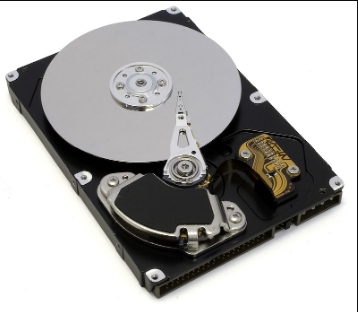How to Change Mouse DPI? Make Changes According to the Task

There are three main types of mouse DPI: high, medium, and low. The best way to change your mouse DPI is to adjust it according to the task you’re working on. For example, if you’re doing general browsing or working on an office application, you’ll likely want to use a lower DPI setting.
If you’re playing a first-person shooter game or another fast-paced game, you’ll want to use a higher DPI setting. You can also adjust your mouse’s DPI settings on-the-fly without having to go into your computer’s settings menu by using buttons that are usually located on the top or side of your mouse.
The first step is to identify what DPI setting you to need
For most tasks, such as general use or web browsing, you’ll want a lower DPI setting like 800 or 1200
If you’re a gamer or graphic designer, you may want a higher DPI like 1600 or 2000
Once you know what DPI setting you to need, the next step is to adjust your mouse’s settings accordingly
This can be done in your mouse’s software utility or in your computer’s control panel
After adjusting your mouse’s settings, test it out to see if the new DPI setting feels comfortable and works well for the task at hand
If not, make further adjustments as needed until you find the perfect setting
How Do I Precisely Change My Mouse Dpi?
There are a few things you’ll need to do in order to precisely change your mouse DPI. The first is to identify what your current DPI setting is. You can do this by opening the Mouse Properties window (in Windows) and looking at the Pointer Options tab.
Your current DPI will be listed under “Motion.” Next, you’ll need to decide what new DPI setting you want to use. A good way to do this is to experiment with different settings until you find one that feels comfortable for you.
Once you’ve decided on a new DPI, it’s time to make the change. In Windows, open the Mouse Properties window again and go to the Pointer Options tab. At the bottom of this tab, there will be a section labeled “Pointer Speed.”
Use the slider in this section to adjust your mouse’s DPI up or down until it reaches the setting you want. Once you have your new DPI set up, test it out for a while and see how it feels. If it’s not quite right, don’t be afraid to adjust it again until you find a setting that works well for you!
How Do I Force Change Dpi?
Windows 10 does a pretty good job of automatically adjusting the DPI scaling for different monitors. However, there may be times when you want to override the system settings and force a specific DPI scaling. Here’s how:
1. Right-click on the desktop and select Display Settings from the context menu.
2. In the Display Settings window, scroll down to the bottom and click on Advanced display settings. 3. In the Advanced Display Settings window, click on Change high DPI settings in the left pane.
4. In the High DPI Settings dialog box, check the Override high DPI scaling behavior option and select System (Enhanced) from the drop-down menu next to it. Click OK to save your changes and close all windows.
Is 800 Dpi Good for Gaming?
When it comes to choosing a gaming mouse, one of the most important factors to consider is the DPI, or dots per inch. This refers to the sensitivity of the mouse and how many pixels it can move per inch. A higher DPI means that your mouse will be more sensitive, while a lower DPI will make it less sensitive.
So, is 800 DPI good for gaming? The answer may surprise you – it depends on what you need and wants from your gaming experience. If you are looking for precision and accuracy, then a lower DPI may be better for you.
On the other hand, if you need speed and agility, then a higher DPI could be what you need. Ultimately, it comes down to personal preference and what type of games you like to play.
How Do I Change My Mouse Dpi to 800?
There is no one-size-fits-all answer to this question, as the best way to change your mouse DPI will vary depending on your specific needs and preferences. However, we can offer some general tips that may help you find the best setting for your purposes. First, it’s important to understand what DPI (dots per inch) means in relation to mice.
DPI is a measure of how sensitive a mouse is to movement – the higher the DPI, the more sensitive the mouse will be. This can be beneficial if you need precise cursor control, but it can also make it harder to perform basic tasks like click and drag if your DPI is set too high. To change your mouse DPI, start by opening the Mouse settings panel in Windows Control Panel.
From here, you should see an option labeled “DPI.” Clicking on this will allow you to adjust your mouse’s sensitivity. We recommend experimenting with different settings until you find one that feels comfortable for you.
Keep in mind that some mice also have hardware buttons that let you adjust their DPI on the fly – this can be a handy feature if you need to switch between different sensitivities frequently.
How to Change Mouse Dpi to 400?
Most computer mice have adjustable DPI settings that allow you to change the sensitivity of the mouse. This can be useful if you find your mouse is too sensitive or not sensitive enough. In this article, we’ll show you how to change the DPI of your mouse to 400.
Changing the DPI of your mouse is a relatively simple process. Most mice will have a button on them that allows you to cycle through different DPI settings. For example, Logitech’s G502 Proteus Core has a “DPI shift” button behind the scroll wheel that lets you cycle between five different DPI settings.
To change the DPI of your mouse, simply press and hold the “DPI shift” button (or similar) and then use the scroll wheel to cycle through the different sensitivities until you find one that suits your needs. Once you’ve found a suitable setting, release the “DPI shift” button and your new setting will be saved automatically.
Mouse Dpi Changer Software for Any Mouse
There are a lot of different ways that you can change the DPI on your mouse. You can use hardware, software, or a combination of both. This article will show you how to use a software solution to change the DPI on any mouse.
The first step is to find and download a mouse DPI changer software program. Next, install the program and launch it. Once the program is open, select your desired DPI from the drop-down menu.
Finally, click “Apply” and then “OK” to save your changes. That’s all there is to it! Now you can enjoy using your mouse with the new DPI settings.
How to Change Mouse Dpi to 1600
If you’re looking to change your mouse DPI to 1600, there are a few things you’ll need to do. First, you’ll need to find a mouse with the right DPI settings. Second, you’ll need to adjust your computer’s settings to match the new mouse.
Here’s a step-by-step guide on how to do both:
1. Find A Mouse With The Right DPI Settings The first step is finding a mouse that has the right DPI settings for you.
If you want to change your mouse DPI to 1600, look for a mouse that has adjustable DPI settings. Many gaming mice have this feature, so if you’re looking for a high-performance option, start there. You can also find some great options from brands like Logitech and Razer.
2. Adjust Your Computer’s Settings To Match The New Mouse Once you have your new mouse, it’s time to adjust your computer’s settings to match it. In most cases, this simply involves changing the sensitivity setting in your operating system’s control panel.
For Windows users, this can be found under “Mouse.” Mac users will find it under “System Preferences.” If your new mouse has its own software, however, follow the instructions provided by the manufacturer on how to adjust the settings within that program.
Dpi Analyzer
DPI, or dots per inch, is a measure of printing resolution. The higher the DPI, the more detail can be printed in an image. A DPI analyzer is a tool that helps to determine the optimum DPI for a given print job.
This is important because using too high of a DPI can result in wasted ink and paper while using too low of a DPI will result in inferior print quality. There are many factors that go into determining the best DPI for a given print job. These include the type of printer being used, the type of paper being used, and the desired final output quality.
In general, however, most printers are capable of producing good quality prints at 300 DPI or higher. For photo-quality prints, 600 DPI or higher is typically necessary. The first step in using a DPI analyzer is to select the appropriate input image.
This image should be representative of the type of images that will be printed as part of the job. Once selected, the image should be opened in an editing program such as Photoshop or GIMP. Once open in an editing program, the next step is to resize the image to match the desired final output size.
For example, if you want to create an 8×10 inch print, you would resize your input image to 8×10 inches at 300 PPI (pixels per inch). Once resized, it’s time to analyze your image! When analyzing your image with a DPI analyzer tool, you’re looking for two things: pixels per inch (PPI) and percent coverage.
When it comes to playing video games, one of the most important things is having the right mouse sensitivity. This can be the difference between winning and losing, especially in fast-paced games. There are a few things that you need to take into account when setting your mouse sensitivity, such as your screen size, resolution and DPI.
You also need to consider what type of game you are playing. For example, a first-person shooter will require a different sensitivity than a strategy game. There are a few ways to find the perfect mouse sensitivity for you.
The first is to experiment with different settings until you find something that feels comfortable. Another way is to use an online calculator that takes into account all of the factors mentioned above. Once you have found a good starting point, you can then make small adjustments until you find the perfect setting for you.
If you’re looking for more tips on how to improve your gaming skills, be sure to check out our blog! We’ve got tons of articles on everything from which games to play to how to get better at them.
How to Change Mouse Dpi to 800 Windows 11?
If you’re a PC gamer, you know that mouse dpi (dots per inch) is an important setting. A higher dpi means your cursor will move across the screen more quickly, while a lower dpi means more precise movements. So if you’re looking for a little more speed or precision in your game, changing your mouse dpi is a good place to start.
Here’s how to change your mouse dpi in Windows 11:
1. Right-click on the desktop and select “Display Settings.”
2. Click on the “Advanced Display Settings” link at the bottom of the window.
3. Scroll down to the “Monitor” section and click on the “DPI Setting” drop-down menu.
4. Select either the “Medium (125%)” or “Large (200%)” option depending on how much change you want to make to your mouse dpi.
How to Change Dpi?
If you’re not happy with the current DPI setting on your computer, there’s good news- it’s relatively easy to change! In this blog post, we’ll walk you through the steps necessary to adjust your DPI settings in Windows 10. First things first, what is DPI?
DPI stands for “dots per inch” and refers to the number of pixels that are displayed per inch on a screen. A higher DPI setting means that more pixels are crammed into a smaller space, resulting in a sharper image. Conversely, a lower DPI setting means that fewer pixels are displayed per inch, resulting in a blurrier image.
So how do you change your DPI settings in Windows 10? The process is actually pretty straightforward. Just follow these steps:
1. Right-click on an empty area of your desktop and select “Display Settings” from the drop-down menu.
2. Scroll down to the “Scale and Layout” section and click on the drop-down menu under “Change the size of text, apps, and other items”.
3. Select the percentage value that you want to use for scaling purposes.
We recommend choosing something between 100% and 125%. 4. Click “Apply” at the bottom of the window and then restart your computer for the changes to take effect! And that’s all there is to it!
Adjusting your DPI settings is a great way to improve readability or make better use of screen real estate if you’re working with multiple monitors.
How to Use Dpi Button on Mouse?
If you’re a PC gamer, you know that having the right mouse can make all the difference in your gaming experience. One of the most important features on a gaming mouse is the DPI button. This button allows you to change the sensitivity of your mouse, which can be crucial in certain situations.
Here’s a quick guide on how to use the DPI button on your gaming mouse. First, let’s talk about what DPI stands for. DPI stands for dots per inch, and it’s a measure of how sensitive your mouse is.
The higher the DPI, the more sensitive your mouse will be. That means that if you’re trying to make small movements, a high DPI setting will be better. On the other hand, if you’re doing something where large movements are more advantageous, like sweeping across an open area in an FPS game, then a lower DPI setting will be better.
Most gaming mice have multiple DPI settings that you can choose from. To change between them, simply press the DPI button on your mouse until it cycles to your desired setting. Some mice also have an LED indicator that shows you which setting you’re currently on.
That’s really all there is to using the DPI button on your gaming mouse! It may seem like a small thing, but being able to adjust your sensitivity on-the-fly can give you a big advantage in some games. So experiment with different settings and find what works best for you and the games you play most often.
Conclusion
If you’re someone who spends a lot of time on the computer, then you know how important it is to have a good mouse. But what many people don’t realize is that the mouse’s DPI (dots per inch) can make a big difference in how comfortable and efficient you are while using it. A higher DPI means that the cursor will move further with each movement of the mouse, which can be helpful if you’re working on a large screen.
On the other hand, a lower DPI can be more precise, which is better for tasks like photo editing. So how do you know what DPI to use? Here are some tips:
If you’re mostly doing general web browsing and office work, then a DPI between 800 and 1200 should be fine. – If you regularly work with graphics or do a lot of photo editing, then consider using a mouse with a higher DPI (1200-1600). – For gaming, it’s often best to use the highest DPI setting possible so that you can quickly react to what’s happening on screen.
Of course, these are just general guidelines and ultimately it’s up to you to experiment and find out what works best for your needs. And remember, most mice nowadays allow you to change the DPI on the fly so that you can easily switch between settings depending on what task you’re currently working on.






